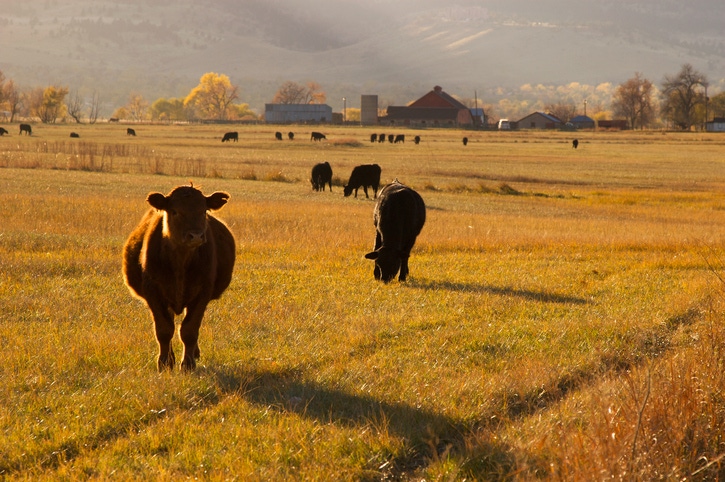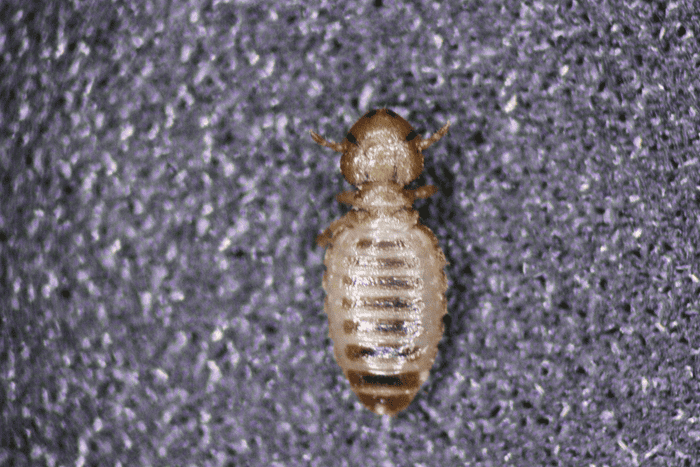Fall is the time to control lice. Or is it?
Are lice developing resistance to some of the products? While we do not know for sure, it is a possibility. Nonetheless, waiting to treat until the start of winter, pouring from poll to tailhead and following label directions are all things you can do this winter to decrease your chance of an outbreak.
September 25, 2018

Fall is the time of year we think about lice control in much of the country, but is that the correct timing? More and more we hear producers and veterinarians lament about lack of effectiveness of lice control. Are lice getting harder to treat? Here’s a little history.
Cattle can have two types of lice: chewing (or biting) lice and sucking lice. These pests live their entire life cycle on the animal. Yes, some lice can fall off the animal and live in bedding for a few days, but that is of minor significance when we think about controlling the parasite.
The lice causing excessive scratching and hair loss around the neck and shoulders during the winter are actually on the animal the entire year. Lice are at a much lower population during the warmer months of the year, and they seem to infect some animals more easily than others. When the weather turns cooler and the cow’s hair grows longer, a louse population explosion ensues.
One way cattle limit the lice population during warm months is by licking themselves and others. A rough cow tongue applied to a slick, summer haircoat is quite efficient in eliminating some annoying lice. In winter, the cow’s long, thick haircoat protects the pest from the cattle grooming practice.
If you deworm your cattle with an injectable macrocyclic lactone or ivermectin-type product, you should also pour your cattle with a lice control product. These injectable products are very good at controlling the sucking lice, but lack effectiveness against the chewing lice. Any newly purchased animals should be poured for lice and quarantined from the herd for 30 days.

Whether they’re biting or sucking lice, they’re a problem for your cattle. This red chewing louse (Bovicola bovis), for example, can cause a lot of discomfort for cattle, particularly around the neck and dewlap. If you deworm your cattle with an injectable macrocyclic lactone or ivermectin-type product, you should also pour your cattle with a lice-control product. These injectable products are very good at controlling the sucking lice, but lack effectiveness against the chewing lice.
When you use a pour-on product for lice control, be sure to apply it from the poll to the tailhead. If the product is just splashed on the neck and shoulders, lice well away from this area have an excellent chance to move even farther away from the product and survive. If you pour from the poll to the tailhead, your chance of success is much greater.
Some lice-control products need two doses to be effective. Read the label to see if you need one dose or two, and always follow label directions.
If you are walking cows through the chute well ahead of winter, this is likely too early to use a lice-control product. Wait until cows start to develop a winter coat to treat them. You want to wait until the louse population explosion occurs so that the insecticide will be the most effective.
In some instances, this later time will correspond to when you give a precalving vaccination to the cows for calf scours and/or an inactivated IBR-BVD vaccination to improve colostral immunity of these pathogens.
Are lice developing resistance to some of the products? While we do not know for sure, it is a possibility. Nonetheless, waiting to treat until the start of winter, pouring from poll to tailhead and following label directions are all things you can do this winter to decrease your chance of an outbreak.
Hilton, DVM, PAS, DABVP (beef cattle practice), is a clinical professor emeritus of Purdue University College of Veterinary Medicine, and senior technical veterinary consultant for Elanco Animal Health.
About the Author(s)
You May Also Like




.png?width=300&auto=webp&quality=80&disable=upscale)
